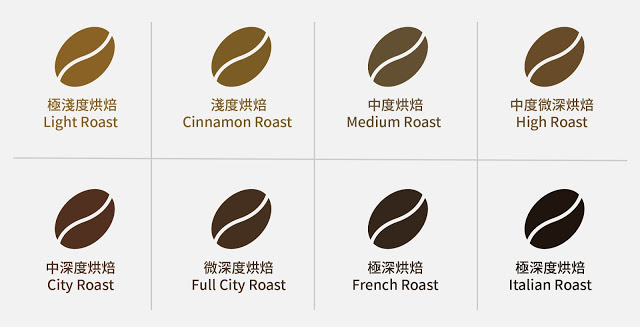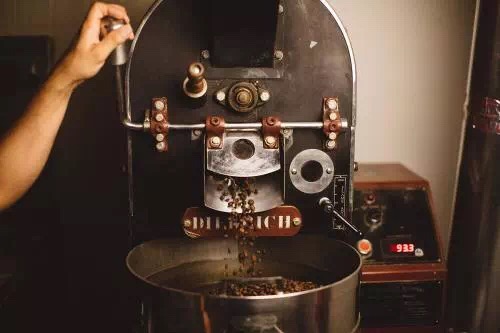Coffee roasting degree picture HD small coffee roaster how to choose the baking curve?

Professional coffee knowledge exchange more coffee bean information please follow the coffee workshop (Wechat official account cafe_style)
Professional coffee roasting | is coffee roasting too complicated? A picture teaches you about the baking process.
Shallow roasting will make coffee immature beans or defective beans more obvious, so it is necessary to select high-quality raw coffee beans for roasting.
The paranoia of loving coffee all his life
With the development of the third wave of coffee aesthetics, people pay more and more attention to the so-called "original flavor of black coffee". Starting from the single bean of the manor and the high-quality beans with rare output, we are very particular about the producing areas, the flavor characteristics, and even the techniques and instruments of cooking, as well as the differences in the degree of baking. For many people who love coffee, it is no longer just drinking coffee, but a kind of paranoia that falls in love with the study of coffee.
In the process of roasting coffee, there are many factors that affect the flavor and taste of coffee. For example, there are considerable differences between minutes and seconds, such as the length of baking time, the way of baking, the degree of baking, and even the amount of coffee beans or the baker's own experience and feel, which makes the knowledge of baking unpredictable and adds a lot of mystery.
The roasting degree of coffee is divided into many kinds, while the roasting degree mentioned in American terminology is subdivided into eight stages:
Very shallow baking / Light Roast
Also known as "shallow baking"
Time to drop beans: before and after the start of the explosion
Wind taste: bean table is light cinnamon color, with a strong grass flavor, taste and aroma is not enough, generally used for experiments, rarely used for tasting.
Shallow baking / Cinnamon Roast
Also known as "cinnamon baking"
Time to drop beans: an explosion begins to be dense.
Wind taste: the bean surface is cinnamon color, at this time the smell of grass has been removed, strong acidity, slightly fragrant, often used to make American coffee.
Medium baking / Medium Roast
Also known as "micro baking"
Time to drop beans: from the explosion to the end
Wind taste: the bean surface is chestnut color, the taste is light, sour and bitter.
Moderate aroma, retain the original flavor of coffee beans, often used as American coffee or mixed coffee.
Moderate micro-deep baking / High Roast
Also known as "concentration baking"
Time to drop beans: the end of the first burst
Wind taste: the bean surface is light reddish brown, the taste is fresh and rich, sour and bitter balance is not irritating, and slightly sweet, the aroma and flavor are good, Blue Mountain, Kilimanjaro coffee are suitable for this roasting degree.
Medium depth baking / City Roast
Also known as "city baking"
The time to drop the beans: after the first burst, that is, between the first and second bursts.
Wind taste: the bean surface is light brown, the taste is bright and lively, the acidity between sour and bitter balance is light, and it releases the high-quality flavor of the coffee, which is the standard baking degree and the favorite baking degree of the public.
Micro-depth baking / Full City Roast
Also known as "Deep City Baking"
Time to drop the beans: the second burst
Wind taste: the bean surface is brown, the taste is calm and full, the bitter taste is strong, the aftertaste is sweet, the aroma is full, it is a Central and South American baking method, and more iced coffee and black coffee are used.
Very Deep Baking / French Roast
Also known as "French baking"
Time to drop beans: the second explosion is dense to the end of the second explosion.
Wind taste: the bean surface is dark brown with black, strong taste, bitter taste, sour taste almost no feeling, with rich chocolate and smoky aroma, the most popular in France, making coffee Oulei and Viennese coffee.
Very deep baking / Italian Roast
Also known as "semantic baking"
Time to drop the bean: the second explosion ends until the bean surface turns black and produces oil.
Wind taste: the bean surface is black and glossy. Before carbonation, the coffee bean fiber has a strong, complex, bitter taste, with a strong fried and scorched aroma. It is mainly popular in Italy and is used to make Italian coffee Espresso.
The charm of shallow baking
In Taiwan, such "coffee professionalism" has also quietly set off a trend because of the growth of the market for fine black coffee. In addition to promoting the slow pace of slow work and patiently serving hand-brewed coffee to guests, many proprietors of self-run cafes also devote themselves to the bottomless depths of knowledge of coffee roasting. Did you find out? Although there are thousands of kinds of coffee on the market, most of them are marked as medium-and deep-roasted coffee, but in professional small cafes, many items are light-roasted, high-priced single-item coffee.
In fact, the use of lightly roasted coffee beans is likely to make the defects of unripe or defective beans more obvious, so it is a great test of the roaster's skills, each has its own advantages. Light roasting accounts for about 40% of the global drinker market, and the reason why it is popular with coffee lovers is that light roasting retains the original beauty of coffee beans more than medium-deep roasting, especially for boutique coffee with obvious aroma and characteristics. Of course, different producing areas, different varieties due to different bean properties, suitable baking methods are also different. Coffee is such a magical and ever-changing drink; the next time you sip coffee in your cup, take a closer look at how the baker interprets his or her perfect baking curve through the mastery of the fire.
.
Important Notice :
前街咖啡 FrontStreet Coffee has moved to new addredd:
FrontStreet Coffee Address: 315,Donghua East Road,GuangZhou
Tel:020 38364473
- Prev

During the whole process of coffee planting and roasting, from the seed to the cup, what has the coffee bean experienced?
Professional coffee knowledge exchange more coffee bean information please follow the coffee workshop (Wechat official account cafe_style) professional coffee roasting | coffee roasting is too complicated? A picture teaches you how to drink authentic and delicious coffee in the baking process, which is concerned by many friends who like to drink coffee. Coffee, the most important thing is roasting, what kind of roasting process determines the taste of coffee
- Next

Professional coffee roasting | explanation of "PIMPIN'S PROFILE" roasting method
Professional coffee knowledge exchange more coffee bean information Please follow the coffee workshop (Wechat official account cafe_style) many people feel that even after reading books and watching teaching videos on the website, it is still difficult for us to understand the baking curve, and the roasted beans always fall short of psychological expectations. I have the honor to visit various well-known bakers, and have learned and used many kinds of baking ovens.
Related
- Beginners will see the "Coffee pull flower" guide!
- What is the difference between ice blog purified milk and ordinary milk coffee?
- Why is the Philippines the largest producer of crops in Liberia?
- For coffee extraction, should the fine powder be retained?
- How does extracted espresso fill pressed powder? How much strength does it take to press the powder?
- How to make jasmine cold extract coffee? Is the jasmine + latte good?
- Will this little toy really make the coffee taste better? How does Lily Drip affect coffee extraction?
- Will the action of slapping the filter cup also affect coffee extraction?
- What's the difference between powder-to-water ratio and powder-to-liquid ratio?
- What is the Ethiopian local species? What does it have to do with Heirloom native species?

